Delicious Bibingka you can easily make at home! Topped with salted eggs, cheese, and grated coconut, this classic Filipino rice cake is the ultimate Christmas treat!
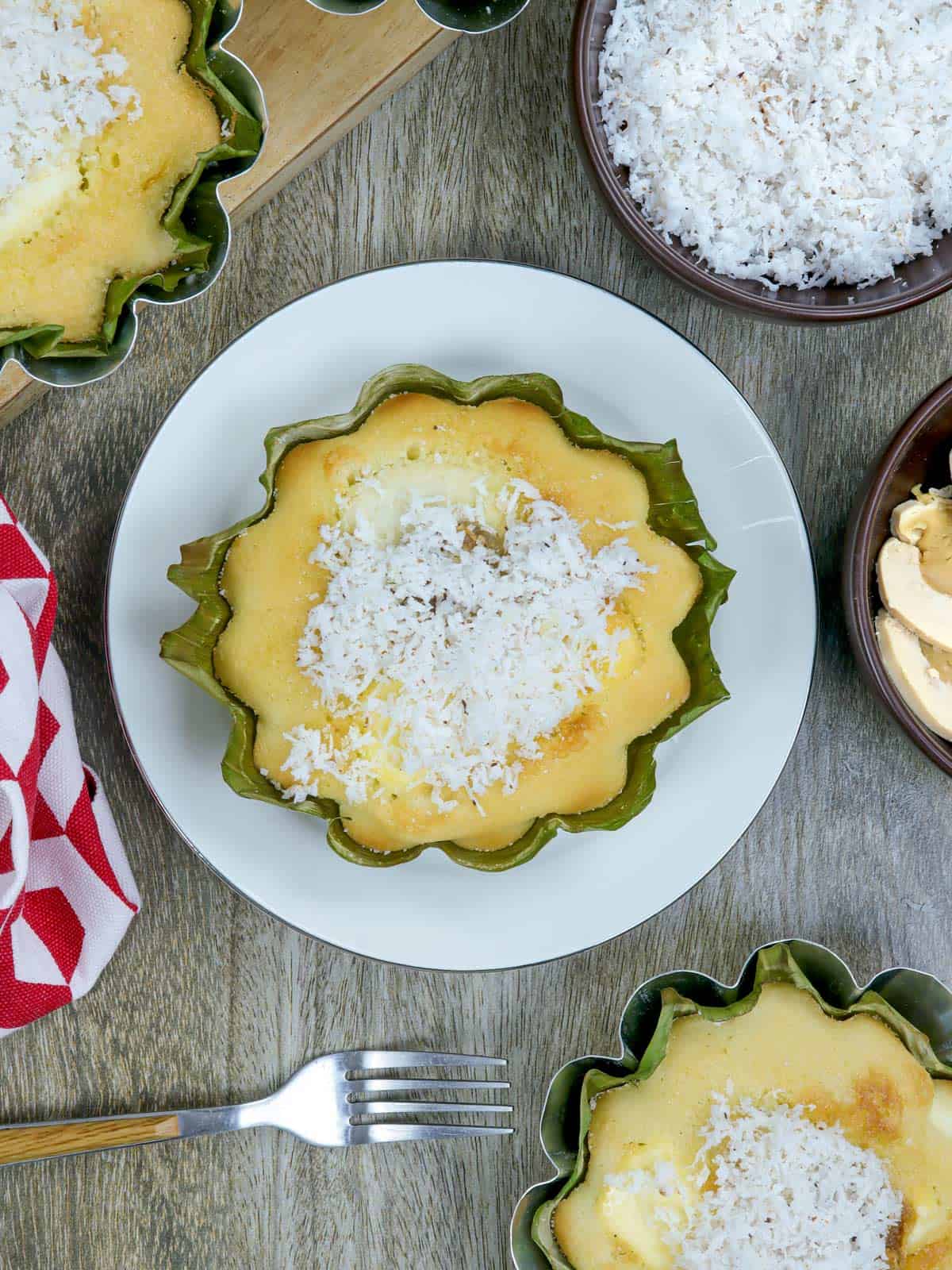
Since the BER months are here and the holiday season has officially started, I thought I'd update my bibingka post with new photos and cooking tips. Nothing says Filipino Christmas better than this Filipino native cake, right? Except, maybe, the festive cathedral window gelatin or layered crema de fruta cake.
I spent part of this week testing various recipes and trying to develop a traditional version made from galapong. However, after going through enough rice grains to feed a nation in my experiments, I realized the easiest way to make bibingka at home is to use rice flour.
Forget soaking and grinding! Buy a bag of rice flour at the grocery store, and your favorite Filipino treat will be a matter of stirring the ingredients into a batter and quickly popping the mixture in the oven to bake!
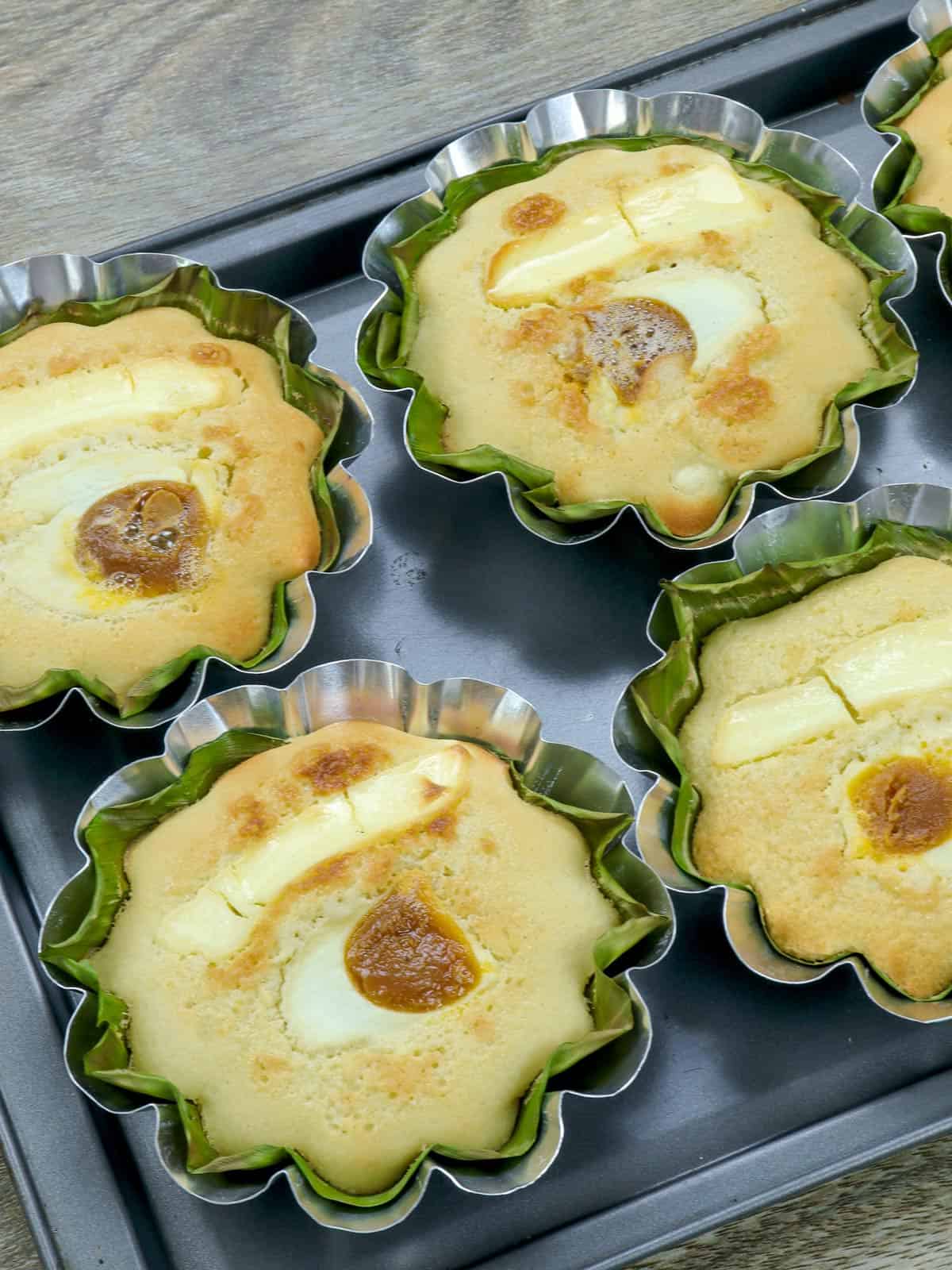
What is Bibingka
Bibingka is a classic Filipino delicacy that's especially popular during Christmas. Sold outside churches during the nine-day Misa de Gallo, it's commonly enjoyed after the mass as breakfast or as a midday snack with a cup of hot chocolate or salabat.
Similar to putong bigas, traditional bibingka is made with galapong. Rice grains are soaked in water overnight to ferment and soften and then ground using stone mills into a thick paste.
The resulting rice dough is combined with water or coconut milk to form a batter and baked in a banana-lined terra cotta pot until set and nicely charred. These specialized clay pots function like an oven, using hot coals positioned on top and bottom as heat sources.
The Ilocos region has its version called Royal Bibingka. It's made with glutinous rice flour, coconut milk, eggs, and cheese, giving it a soft and chewy texture similar to mochi.
I
I
Ingredient notes
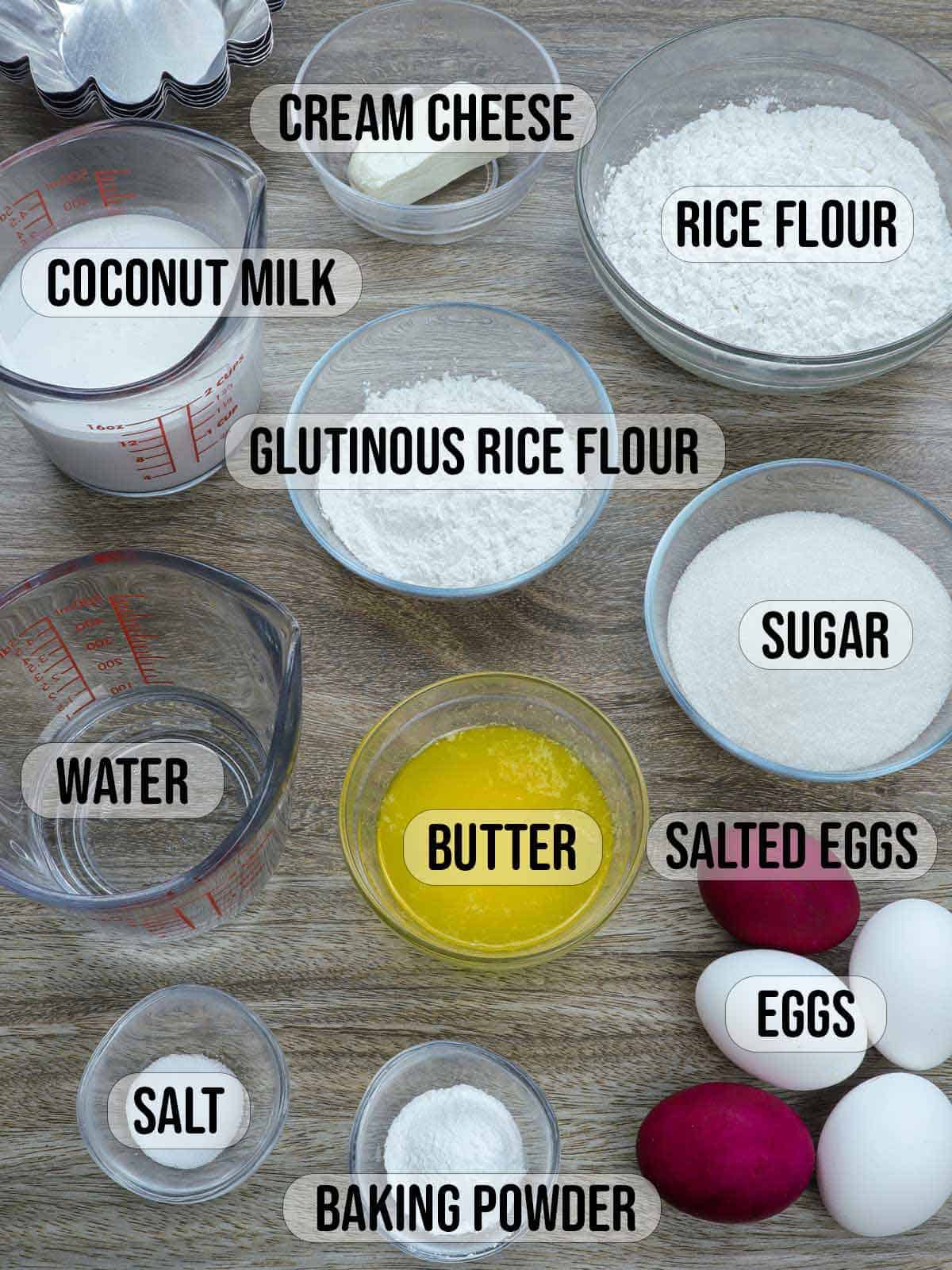
- The batter uses a mix of rice and glutinous rice flour for quick and easy preparation.
- You can add a drop or two of yellow food coloring to the batter to deepen the color.
- The rice cakes, in their basic form, are a simple mixture of galapong and water, but we're making them extra special with coconut milk, beaten eggs, sliced salted duck eggs, and cheese.
- I like to add sliced cream cheese as a topping. You can substitute kesong puto, queso de bola, or sharp cheddar cheese.
Equipment needed
- Banana leaves keep the rice cake from sticking and add an incredible aroma. Inspect the leaves to ensure they're intact and free of rips, then pass them quickly over a gas flame until soft and pliable. You can line the tins with parchment paper if you can't find banana leaves.
- I use mamon tin molds I bought in the Philippines, but large muffin tins or fluted pie pans will also work.
Resting the batter
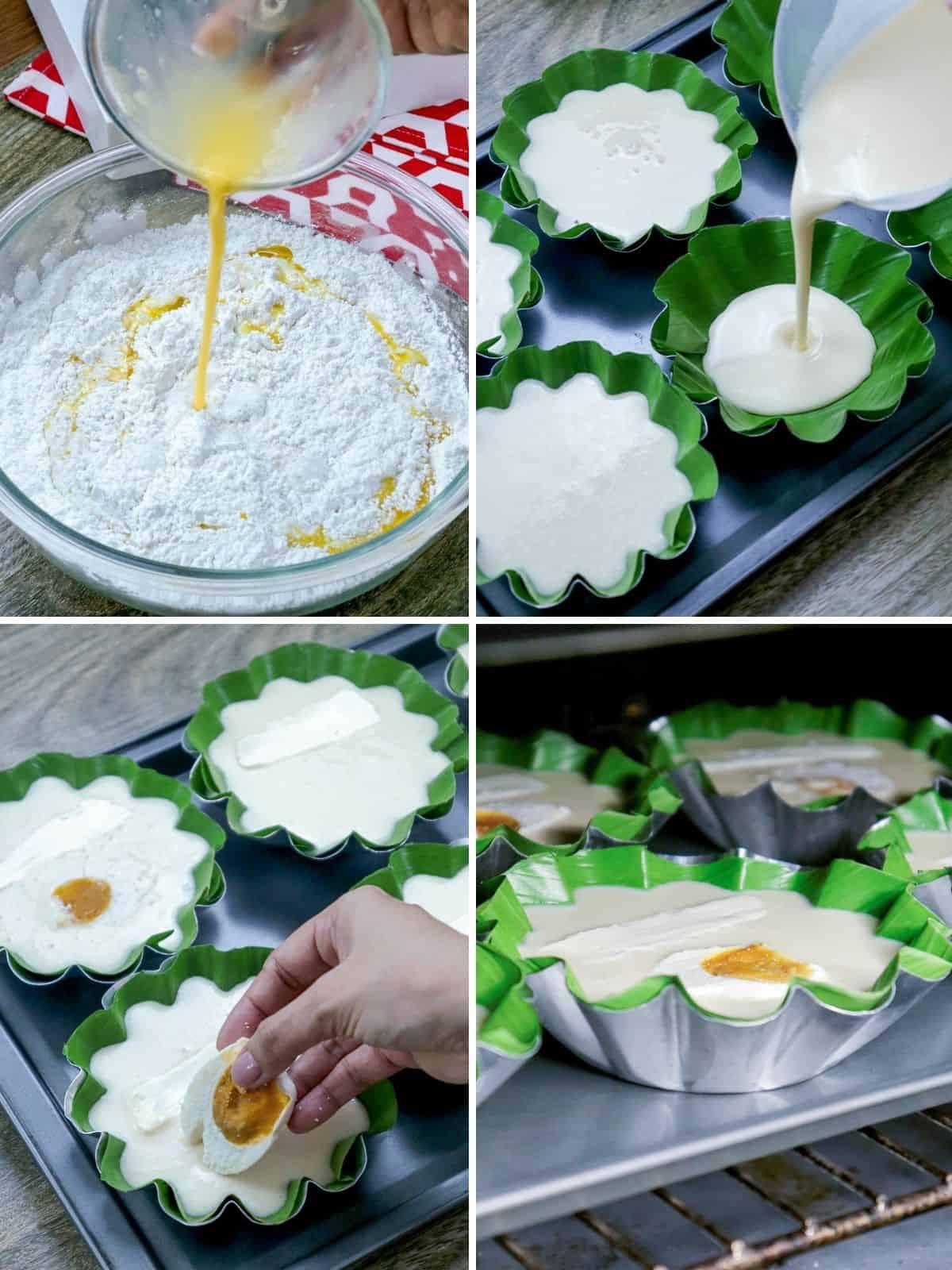
I came to this method by happenstance. I was retesting the recipe for the hundredth time last weekend, but since it was late in the night and I was too sleepy to finish baking the whole batter, I refrigerated the remainder with plans to bake it the next day. The batter thickened quite nicely overnight, and the resulting rice cakes were softer and fluffier!
I discovered that resting the batter improves baked goods. It allows the flour to hydrate and the starch grains to swell, giving the liquid time to soften the flour and the gluten to relax. A good rest also helps distribute the leavening agent evenly for a more tender crumb.
You can cook the bibingka immediately, but if you have time, I suggest letting the batter chill for the best results. Note that it gets thicker the longer it sits.
Helpful tip
To achieve the characteristic charring obtained from cooking in clay pots, broil the bibingka for about 1 to 2 minutes after it has set.
Serving suggestions
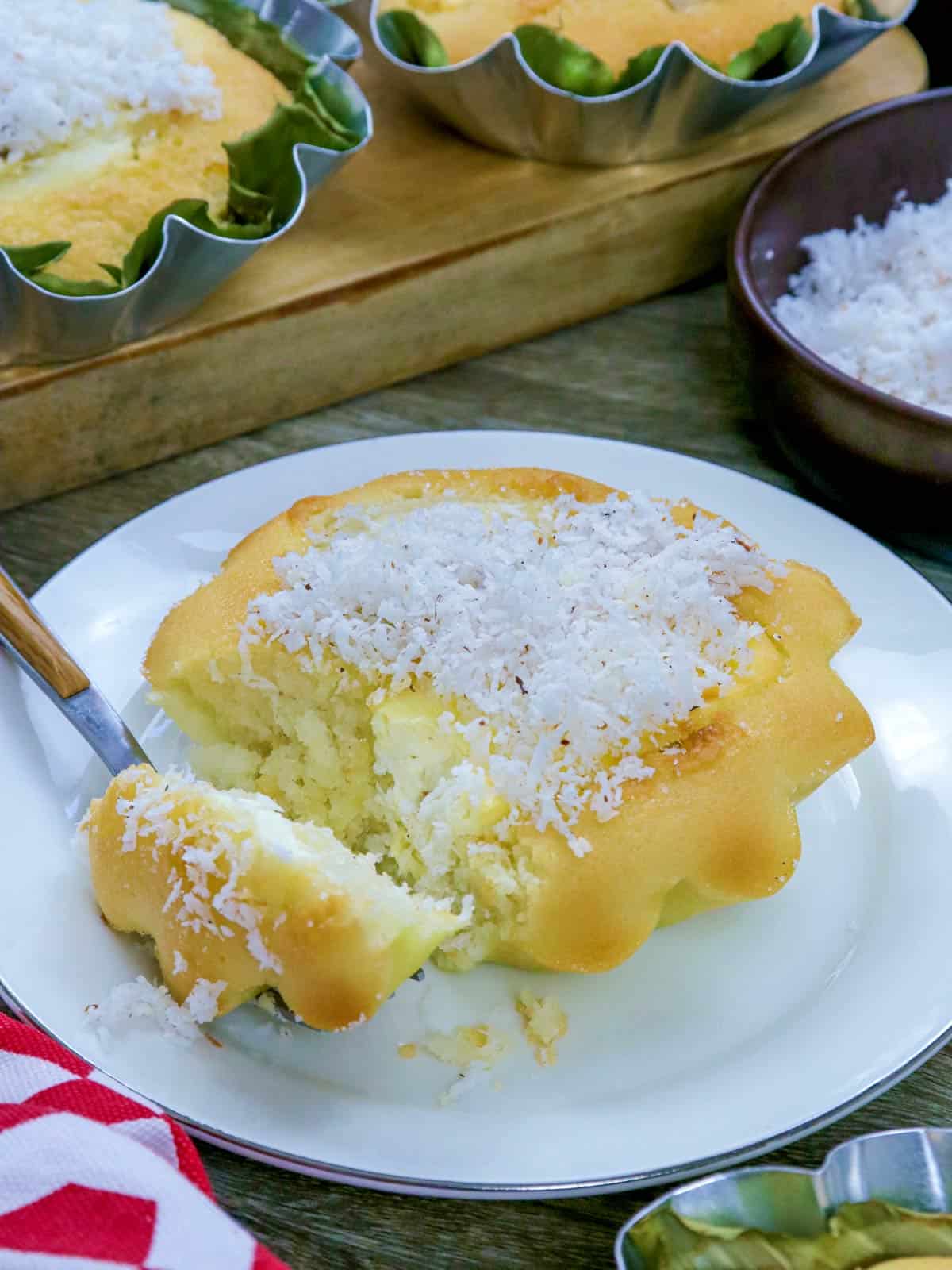
These Filipino rice cakes are usually eaten hot or warm, with margarine spread on top and a generous sprinkling of grated coconut. Enjoy them with a cup of tsokolate de batirol or salabat for a Christmas treat!
Ingredients
- 2 cups rice flour
- ½ cup glutinous rice flour
- 1 cup sugar
- 1 tablespoon baking powder
- 1 teaspoon salt
- 1 ½ cups coconut milk
- ½ cup water
- 3 eggs, beaten
- ¼ cup melted butter
- 2 salted eggs, peeled and sliced lengthwise
- 2 ounces cream cheese, sliced thinly (you can substitute kesong puti or queso de bola)
For Toppings
- margarine or butter, softened
- Sugar to taste
- Grated mature coconut
Equipment
- mamon tin molds
Instructions
- In a large bowl, combine rice flour, glutinous rice flour, sugar, baking powder, and salt. Whisk until well-combined.
- Add coconut milk, water, butter, and eggs. Stir until smooth and well-blended.
- Cover the batter and refrigerate overnight.
- Rinse banana leaves under warm water and wipe off any dirt or grit. Using scissors, trim any thick edges and cut into circles large enough to cover bottom and sides of the pan.
- Quickly pass and heat banana leaves over stove flames for a few seconds or until just softened. Line the pans, making sure the leaves are intact with no rips.
- Pour the batter into the prepared pans up to ¾ full. Arrange sliced salted eggs and cream cheese slices on top.
- Arrange the filled tin molds in a single layer on a baking sheet and place in the oven on the lower rack. Bake in a 375 F oven for about 20 to 25 minutes or until a toothpick inserted in the middle comes out clean.
- Transfer the baking sheet to the top rack and continue to cook for about 3 to 5 minutes or until lightly golden.
- Remove from heat. Spread margarine or butter and sprinkle sugar on top. Garnish with grated coconut. Serve hot.
Notes
- Banana leaves keep the rice cake from sticking and also add an incredible aroma. Inspect the leaves to make sure they're intact and free of rips and pass them quickly over a gas flame until soft and pliable.
- If you can't find banana leaves, you can line the tins with parchment paper.
- I use mamon tin molds I bought in the Philippines, but large muffin tins or fluted pie pans will also work.
- To deepen the color, you can add a drop or two of yellow food coloring to the batter.
- I like to add sliced cream cheese as a topping. You can substitute kesong puto, queso de bola, or sharp cheddar cheese.
- To achieve the characteristic charring obtained from cooking in clay pots, broil the bibingka for about 1 to 2 minutes after it has set.
Video

Nutrition Information
“This website provides approximate nutrition information for convenience and as a courtesy only. Nutrition data is gathered primarily from the USDA Food Composition Database, whenever available, or otherwise other online calculators.”

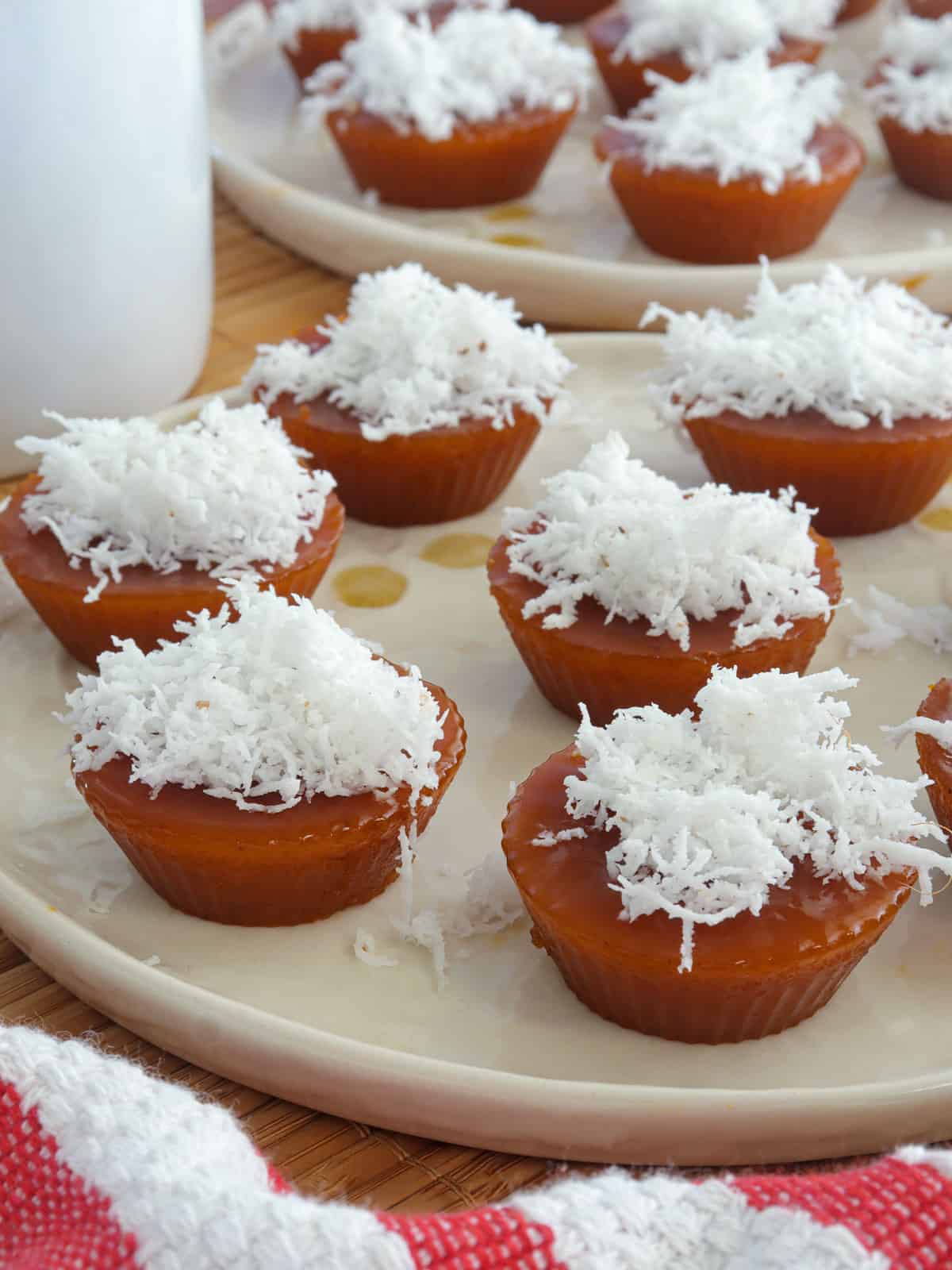
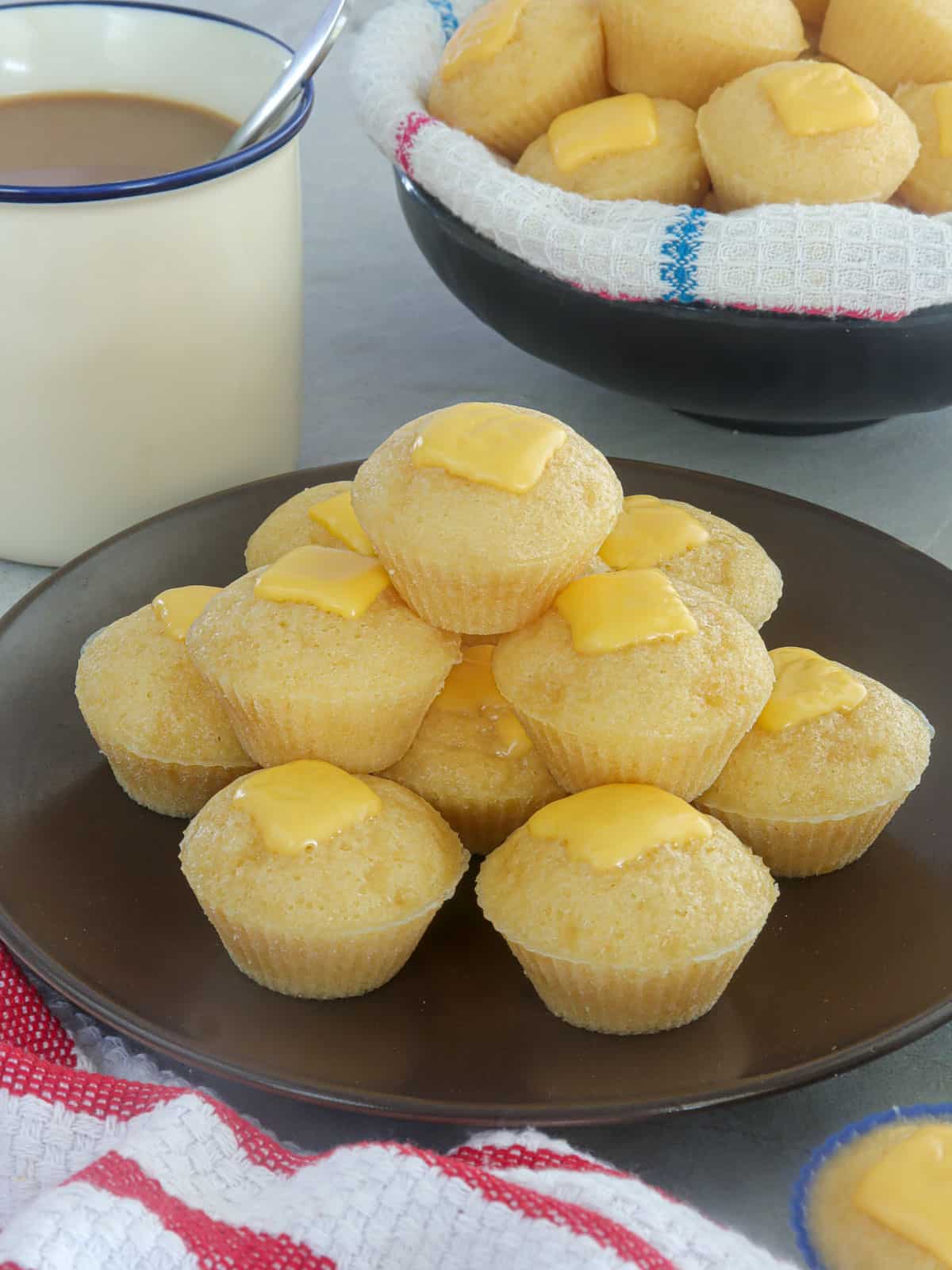
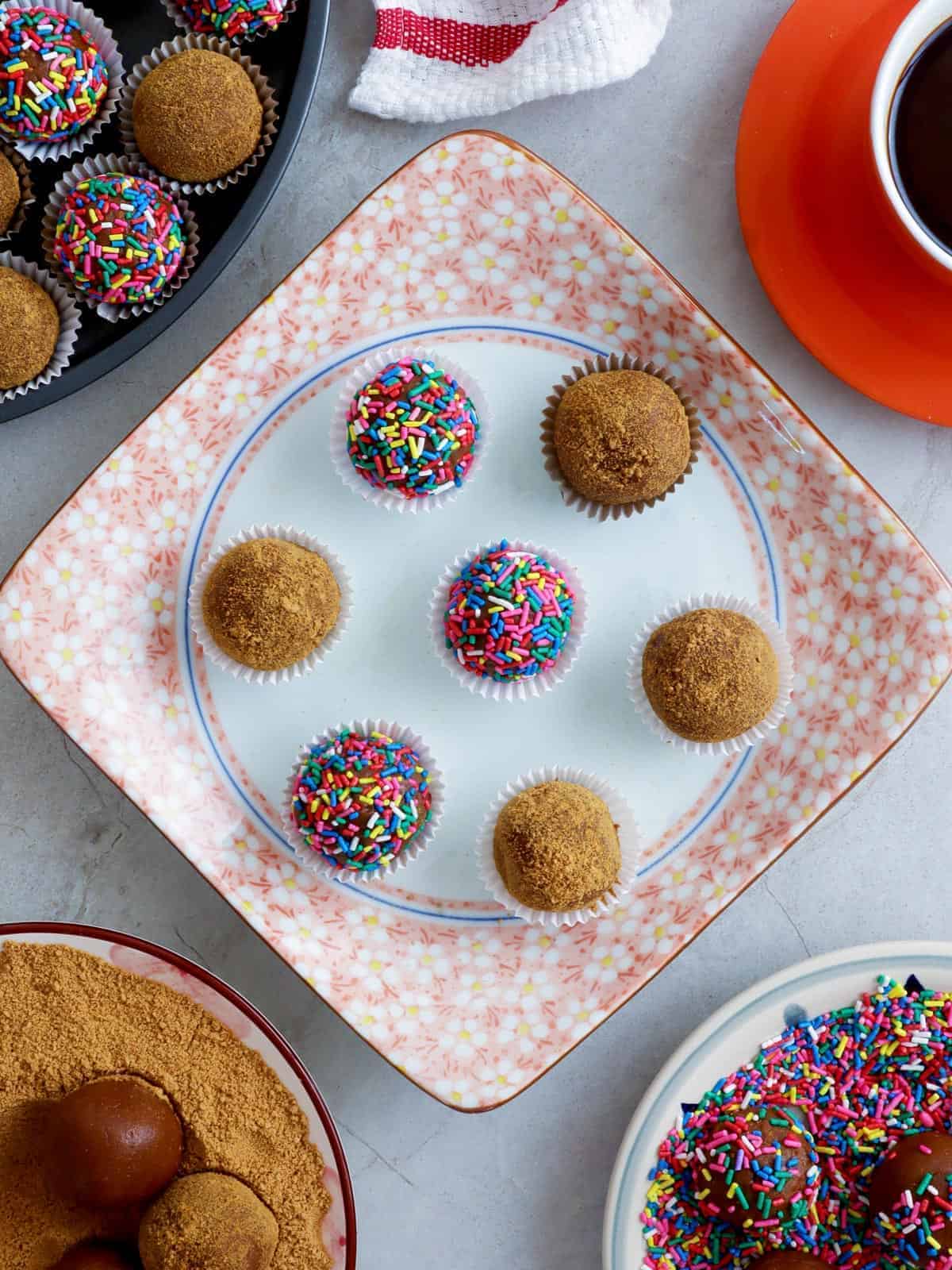
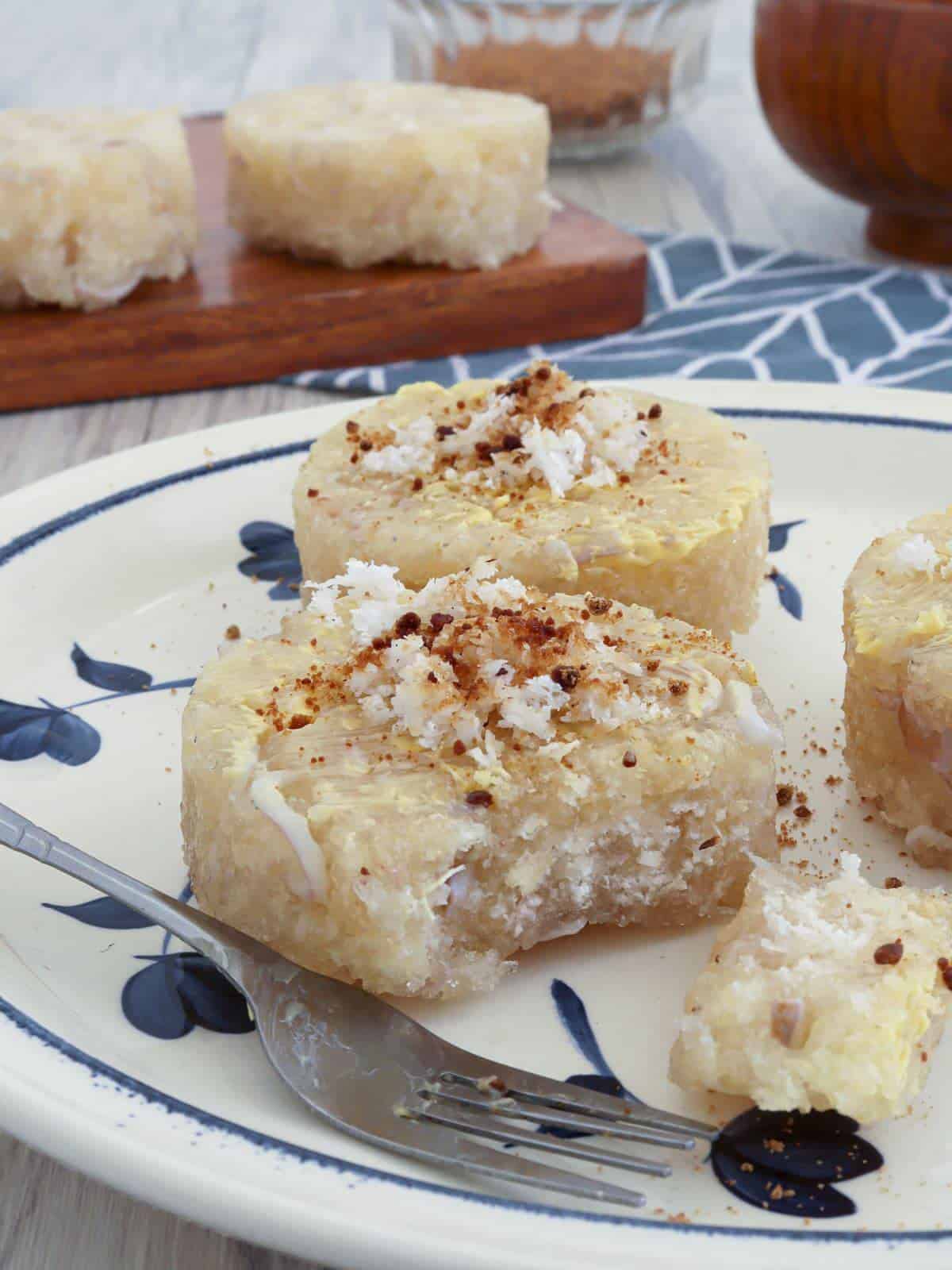
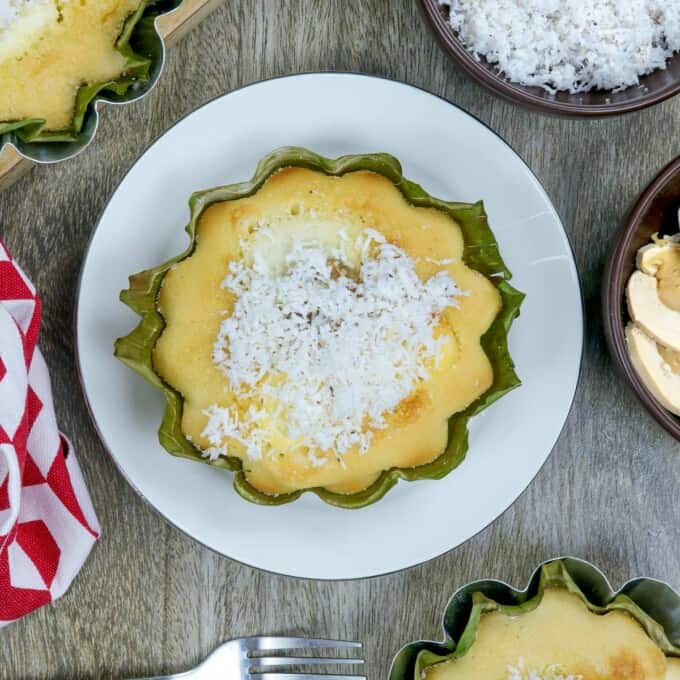
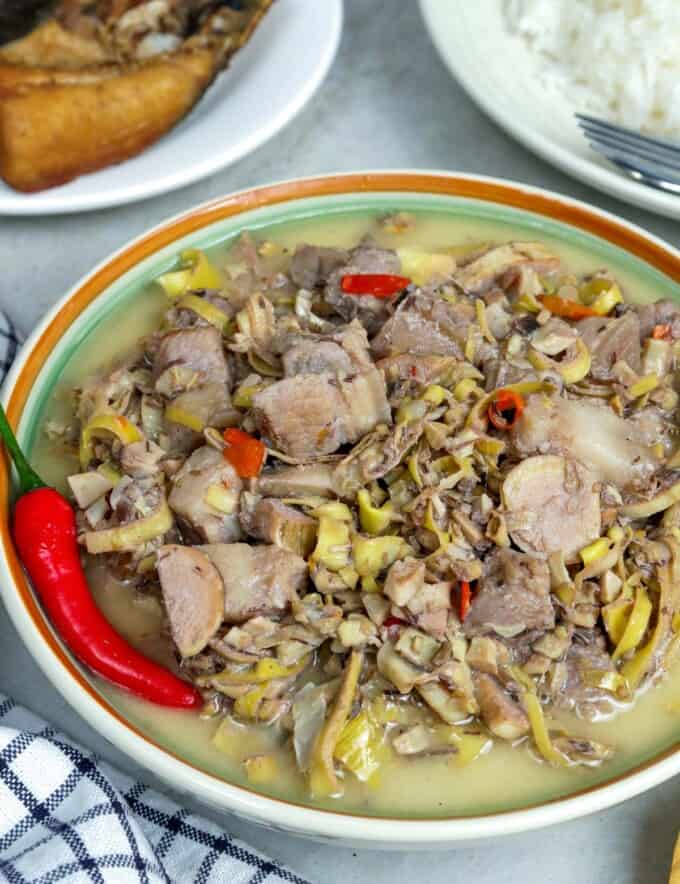
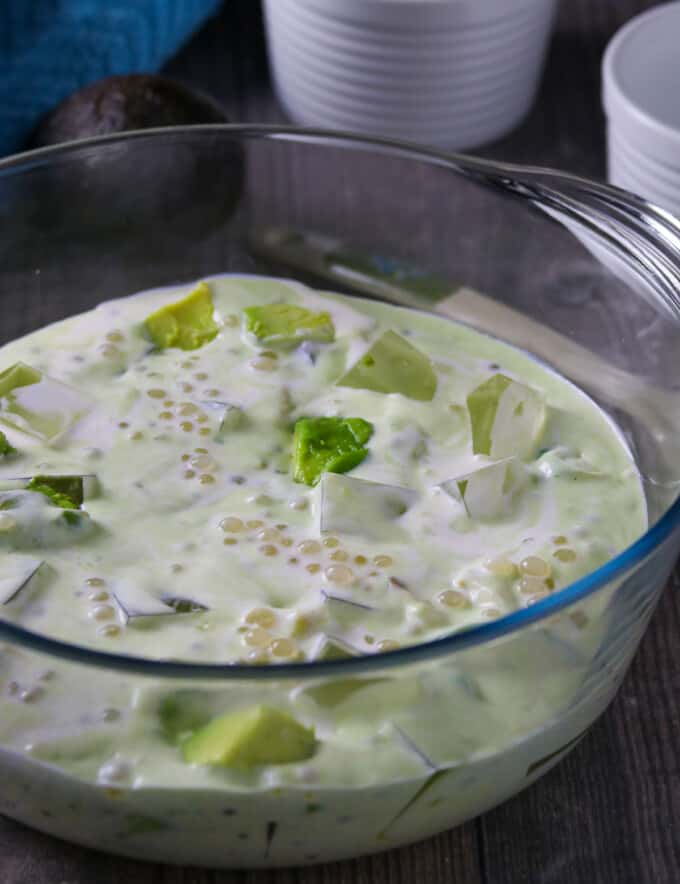
Karen reyes says
Can i skip the dry yeast? Also where can i get those molds? Thanks in advance
Lalaine Manalo says
Please don't skip the yeast, it's needed for the bibingka to rise. I bought the molds in the Philippines but you can order them on Amazon as well. They're called mamon molds.
Mags says
Can I use Mochiko rice flour or Glutinous rice flour from Thailand?
Lalaine Manalo says
Glutinous rice won't work in this recipe, unfortunately. You'll have a dense, sticky texture instead of soft and spongy 🙁
paula ison says
Ive been using Mochiko and it was good. Many people likes It
Egie says
I think it's funny that you said you used evaporated milk but I don't find it in your recipe. Thanks.
Lalaine says
I am glad I was able to amuse you 🙂 This particular recipe doesn't use evaporated milk, it uses coconut milk. I am sorry it was a bit confusing but if you read the post, I was actually referring to the mini bibingka I made which I liked but thought were not authentic as they use evaporated milk.
Gina says
hello! this recipe looks good and will try to make it this month! do you use regular rice flour or glutinous rice flour? thank you!
Lalaine Manalo says
It's regular rice flour, not glutinous 🙂
Ann says
In your comments, you said NOT to use glutenous rice flour, however, your recipe indicates 1/2 cup glutenous rice flour and 3 1/2 cups rice flour.
So should we use 4 cups rice flour?
Ann says
Correction: 1/2 cup glutenous rice flour and 2 cups rice flour. So should we use 2 1/2 cups rice flour.
grace kandog says
I want to try this one. I want to be productive this Christmas vacation with money! hehehe. I want to add this recipe in my BBQ stand. Bibingka at night!
Lalaine Manalo says
Good luck!
Venus says
Can I use cheddar cheese instead of the cheeses you mentioned above? Shall i grate it or slice? =) Salamat po.
Lalaine Manalo says
Cheddar is fine. Sliced will be better 🙂
Mary Ann says
Hi Lalaine,
I followed the recipe, and the result was not soft and spongy. The result was thin and chewy.
I originally printed the recipe on Nov. 5. Instruction- step six, indicates “let the batter stand for 3 to 4 hours”. However when I look at the recipe online today, it shows 2-3 hours.
Is it necessary for the batter to sit for 2-4 hours? I would think after that many hours, the yeast would no longer be active.
I would appreciate your feedback, thank you.
Mary Ann
Lalaine Manalo says
I am sorry to hear the recipe didn't work well for you. I am surprised that it turned out thin and chewy. May I ask if you used regular rice flour and not glutinous rice flour which has a sticky texture.
The recipe had 3 to 4 hours because I tested the recipe in the U.S. and it took about that long to get it a little bubbly. However, we did the video here in the Philippines and it took less time because of the warmer weather. I updated the recipe to 2 to 3 hours as I realized it was a cold day when I tested it. Letting the mixture stand doesn't kill the yeast. It's like baking bread; we wait a few hours to make the dough rise. 🙂
Raffaela says
I made the bibingka tonight, but baked it in separate ramekins instead of a pie pan. I am not Filipina. My only taste of bibingka is the one we buy at the Filipino store. But my Filipino husband gave it two thumbs up. He said this recipe is a keeper.
Thank you, Lalaine
Lalaine says
Thank you, Raffaela! I am glad you and the hubby enjoyed the bibingka. This is one of my favorite things to make during the holidays, reminds of Christmas at home 🙂
Keisha Marie says
Hello! ask ko lang po kung may recipe ba ng puto yema?naisip ko lang po kung paano sya lutuin.
Maraming Salamat!
Lalaine Manalo says
Wala pa but will look into it 🙂
Kwin says
I love to cook
Lalaine says
🙂
Angie says
Hi,I'm dying to make pilipino tamales. Can I steam the tamales in Crock-Pot. Please advice thanks
Lalaine says
I've never tried steaming in a crockpot but I think it would work. Let me know how it turns out!
Georgina says
I've been trying to bake this bibingka but I have a hard time this would not rise for me...why?
Lalaine says
Hello Georgina
The bibingka didn't rise at all? It doesn't really plump up like a muffin, if that's what you're expecting?
Chowhound says
Wow, it's almost that time of year again. Nothing beats Pinoy Christmas. I lived with a very old fashioned and really Catholic aunt when I was going to uni and to this day, she doesn't know this but bibingka and puto bumbong were the only reasons why I allowed her to drag me out of bed to go to simbang gabi.
By the way, I'd been a long time lurker. Thank you for promoting the delicious food from the Old Country. I've lived in Canada for over ten years now and I still get the occasional bouts of homesickness. Your delicious-looking food pics and often funny anecdotes help ease that a bit. The recipes and the pics continue to give me some serious kitchen goals.
Lynne says
Hi. I am just starting to cook Filipino dishes. And, will have to try your bibinka recipe. Looks simple and delicious!
Lalaine says
Please let me know how it turns out 🙂
Mia says
This looks great and interesting! I would like to try this recipe and compare the difference in taste from the bibingka I grew up eating in the southern part of Cebu. We have 2 different types of bibingkas: plain ones that are either white or pink with no toppings halfway wrapped in young banana leaves. The other one is more delicious, baked until the tops are browned and then slathered with rich latik (coconut syrup).
Rosita says
I like your resipe, i like to try to make bibingka on thanksgiving day. .thanks
Lalaine says
Thanks, Rosita, I hope you'll find many delicious recipes here at Kawaling Pinoy for your Thanksgiving celebration 🙂